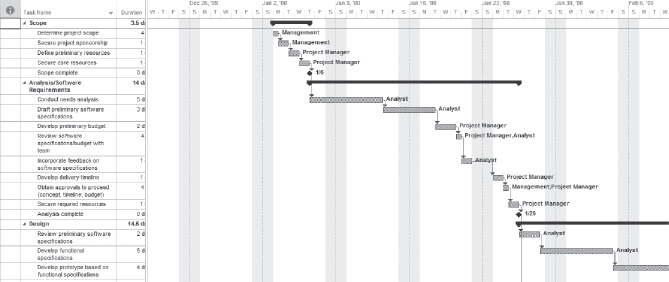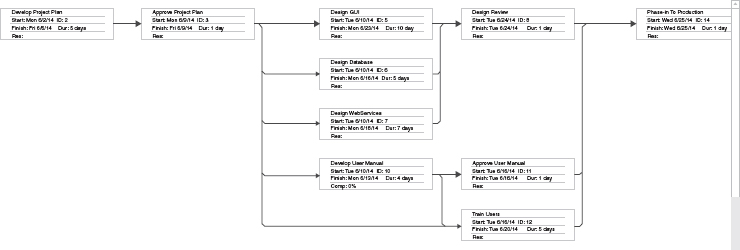6 Time-Boxing, Kanban, and Theory of Constraints
THE TYPICAL WAY OF MODELING traditional projects is based on a fairly statically defined model composed of work-breakdown structures, Pert charts, Gantt charts, etc. Figure 6.1 shows an example Gantt chart and Figure 6.2 shows an example Pert chart.
Those modeling tools work fine for a heavily plan-driven approach where the requirements as well as the overall design approach for meeting those requirements can be defined prior to the start of the project. However, they can be very difficult or impractical to apply in a more dynamic and adaptive project approach where the requirements are much more uncertain and difficult to define upfront. In that kind of project, it is very difficult and perhaps impractical to define and manage the structure of the project, and it becomes far more important to manage flow.

FIGURE 6.1 Example Gantt chart

FIGURE 6.2 Example Pert chart
THE IMPORTANCE OF FLOW
Agile project management approaches are heavily based on a more dynamic model and on optimizing flow in order to maximize the efficiency and the throughput of the project team rather than statically managing the structure of the project tasks. The idea of flow originated with lean manufacturing and has been used in manufacturing to streamline ...
Get The Project Manager's Guide to Mastering Agile: Principles and Practices for an Adaptive Approach now with the O’Reilly learning platform.
O’Reilly members experience books, live events, courses curated by job role, and more from O’Reilly and nearly 200 top publishers.

